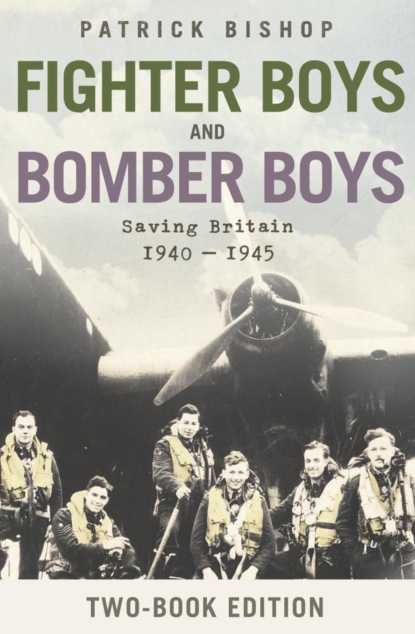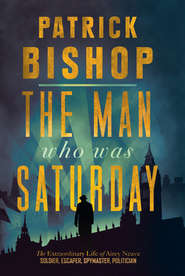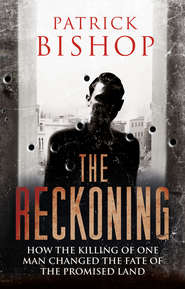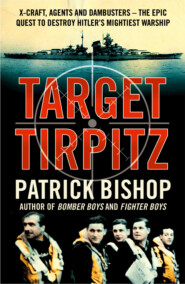По всем вопросам обращайтесь на: info@litportal.ru
(©) 2003-2024.
✖
Fighter Boys and Bomber Boys: Saving Britain 1940-1945
Настройки чтения
Размер шрифта
Высота строк
Поля
Half the pilots in each squadron now had to be permanently available on station in case of a German attack. Gone were the carefree days when we would plunge into the cool blue sea at West Wittering and lie on the warm sand in the sun, or skim over the waters in Chichester harbour, in the squadron’s sailing dinghy, or drive down to the Old Ship at Bosham with the breeze in our hair and knock it back under the oak rafters. Our days were now spent in our Hurricanes at air drill, air firing, practice battle formations and attacks, dogfighting – and operating under ground control with the new super-secret RDF (the name then given to radar).
(#litres_trial_promo)
It was the same for everybody. The pleasant old arrangements of no flying after 4 p.m., and weekends and Wednesday afternoons off, were dropped and the tempo of practice and training quickened. The activity was intense but lacked direction and seemed curiously disconnected from the realities of aerial warfare as had been demonstrated by the German and Italian air forces in the skies over Spain. The preparations also seemed to lack consistency, with different squadrons following different programmes. It would soon become clear that some skills vital for success and survival in the changed conditions of air fighting were miserably under-taught and in some cases ignored altogether.
Tactical training before the war was based on two premises that would turn out to be fatally mistaken once the conflict began. The first of these was that close, tight formation flying concentrated force in such a way as to make fighters both more destructive and more secure. The second was the expectation that they would be facing fleets of bombers arriving in waves, capable of defending themselves with onboard guns but unprotected by escorting fighters. The logic of the assumption was that the Luftwaffe would be confined to its German bases and its Me 109s would not have the range to accompany the bombers.
Those who survived the war complained that the RAF had a drill-hall mentality, exalting the sort of flying discipline exemplified by 19 Squadron’s aerial rope trick. There was a useful point to close formation flying. It helped groups of aeroplanes to move through cloud without colliding or losing contact with each other. But good formation drill was also seen as the basis of good tactics. Al Deere wrote later that ‘the majority of our training in a pre-war fighter squadron was directed at achieving perfection in formation with a view to ensuring the success of the flight and squadron attacks we so assiduously practised’. These were known as Fighter Area Attacks, and were numbered from one to five, depending on the fighters’ line of approach and the number of bombers. Thus, No. 1 involved a section of three or a flight of six fighters attacking one after the other a single bomber from astern. In No. 2, two or more fighters attacked a single bomber in line abreast, and No. 3 envisaged three fighters coming at a single bomber simultaneously from rear, beam, and rear quarter. It was all very theoretical and, as it turned out, of little use. But theory was all there was to go on.
‘The order to attack was always preceded by the flight commander designating the number of the attack, viz. “FAA attack No. 5 – Go!”’ Deere wrote later. ‘These attacks provided wonderful training for formation drill, but were worthless when related to effective shooting. There was never sufficient time to get one’s sights on the target, the business of keeping station being the prime requirement.’
(#litres_trial_promo) Pete Brothers and the rest of 32 Squadron at Biggin Hill prepared for war by following rigid scenarios that proposed set responses to set situations, practising on ‘enemy bombers’ that flew stolidly on, disdaining to take any evasive action. ‘If there was a small number of bombers your twelve aircraft would be divided up into sections of three. Then three of you would have a go at one bomber, one after the other. If there was a large number, you would spread out into echelon starboard [diagonally] setting it all up and giving them plenty of warning you were coming. It must have been all theoretical because no one had actually fought in these conditions before.’
(#litres_trial_promo)
The tactics taught to George Unwin in 19 Squadron were ‘more suited to the Hendon air display’ than the realities of war. When put into practice for the first time over Dunkirk, the results were to be disastrous. The severe limitations of the pre-war tactical approach was to become apparent almost immediately, but this did not stop it being taught well into the war. Roger Hall, a young, pre-war professional soldier who transferred to the RAF, was posted to 152 Squadron at the height of the fighting in September 1940 after only a week’s operational training. He remembered during his instruction being ‘briefed on how to attack a bomber, but it was so perfunctory really that it was almost ludicrous.’ Three pilots were designated to take off in their newly acquired Spitfires and ‘attack’ a Wellington which was playing the role of an enemy bomber. Green though he was, Hall knew that ‘when you attack a hostile bomber they try to get out of the way. But this particular one was simply flying straight and level…The drill was to get above the bomber and the first Spitfire would come down and shoot its port engine and then it would break away. The next one would come and shoot the starboard, then that would break away. Then the third one would come down and shoot the body of the machine and then break away, but all the time the Wellington was just going straight and level, just asking for it…I used to laugh about that.’
(#litres_trial_promo)
Brian Kingcome recalled that ‘fighter versus fighter wasn’t really envisaged or catered for’, and the assumption was that if they did take place they would be ‘pretty much as they were in the First World War except that you had faster, better aircraft and the huge advantage of a parachute’. None the less individual pilots did get in unofficial practice, going off in pairs to chase each other around the sky.
(#litres_trial_promo)
The pilots who went into action for the first time in 1939 and 1940 might have known a lot about flying. They knew little, though, about how to fight in the air and less about how to shoot. Aerial gunnery was supposed to be taught as part of training and each regular fighter squadron was expected to go to an annual camp at one of the armament training stations for practice with live ammunition, shooting at drogues towed behind other aircraft, or at ground targets. This was occasionally supplemented by the use of camera guns, from which theoretical scores could be deduced. It was all a long way from reality.
In retrospect the amount of time spent on what was a fundamental air skill would seem desperately inadequate. ‘Looking back,’ Al Deere wrote afterwards, ‘I can see how dreadfully we neglected gunnery practice, live or by means of cine-films, and what an important part it plays in the part of a successful fighter pilot…squadron morale carried us safely through the early fighter battles of the war, not straight shooting.’
(#litres_trial_promo)
Some pilots never fired at an aerial target before going into action. Tony Bartley, the son of a colonial service judge, who was awarded a short-service commission after leaving Stowe school, did his training before the war. Yet the first time he aimed his guns at a flying object was when he shot at an Me 109 in May 1940. George Unwin was fortunate in having Harry Broadhurst, an outstanding shot, as his flight commander. ‘Training in shooting was nonexistent. No one ever taught you how to shoot. But he did.’ Broadhurst emphasized ‘that the key to shooting was to get in close and the closer you got the more chance you had of hitting’. Unwin, who became a gunner instructor later in his career, found that one of the biggest weaknesses among fighter pilots at the beginning of the war was their inability properly to calculate how far they were from the aircraft they were attacking, often opening fire long before they reached what combat experience would teach was the optimum range of 250 yards. In the pre-war days, when aircraft were still equipped with a simple ring sight, Broadhurst taught his charges to work out the distance of the target by measuring it against the diameter of the circle. At 400 yards a bomber the size of a Wellington exactly filled the sight. At 250 yards, the ring was just outboard of the two engines. It was simple and effective, but according to Unwin never taught systematically.
The apparent explanation for the lack of firing practice was that, with tight financial restraints on the expansion programme, the Air Ministry had decided that spending money on the aircraft and pilots needed to man and equip the new squadrons took priority over new ranges, and so allowances for practice ammunition were cut to a minimum. There was no such excuse in 1940. By then shortage of time was to blame for a continuing failure to teach raw pilots how to shoot before throwing them into battle. When Archie Winskill, a softly spoken RAFVR volunteer from Cumberland, reached 72 Squadron at Biggin Hill on 4 October 1940, he was ‘well-schooled in formation flying and tactics but regrettably with no air-firing experience. I’d only fired my guns once into the sea off Liverpool…We knew nothing about deflection shooting.’
(#litres_trial_promo)
What was needed to attack successfully was the skill to manoeuvre into a favourable position, the ability to judge the correct range to open fire, and finally, and usually equally importantly, the knowledge of how to angle the shot so it stood the best chance of hitting the enemy aeroplane. The latter was deflection shooting. In all but full-on frontal or rear attacks, shooting in a straight line was useless. To strike the target required ‘laying off’, in the same way that a game shooter aims ahead of the pheasant so that the bird flies into the spread of pellets. The principle was recognized in the clay pigeon range installed at pre-war Tangmere and copied later in the war at many fighter bases. Some of the most deadly pilots, like Bob Tuck and Adolph Malan, attributed at least some of their success to their skill with shotguns. The importance of deflection shooting was obvious. Winskill was not to learn it until he was sent off to a gunnery course long after the 1940 crisis had passed.
The pilots of Fighter Command also went into the war with little idea of what they would be shooting at. George Unwin ‘didn’t know a thing’ about the Germans’ strengths, aircraft types and likely modus operandi before he met them in the air. At the time of Munich, the British air attache in Berlin made a tour of squadron bases and delivered a lecture about the Luftwaffe. But detailed intelligence briefings on the enemy were never given on an organized basis before the fighting began, and during the battles of 1940 pilots were seldom allowed a glimpse of the bigger picture. Their knowledge was confined to what had happened to them and their companions on the base, or what they heard on the radio. These shortcomings in training and preparation would only become fully apparent when revealed by the stresses of combat.
The approach of the cataclysm forced the pilots to think about the future. That the crisis was coming to a head seemed surprisingly comforting to some. Watching Europe’s tottering, somnambulistic progress once more towards the precipice induced feelings of restlessness and a desire to get the inevitable over with. Peter Townsend, who at the time of the Abyssinian war had been sickened by the thought of the effects of bombs on men, found the sight of the enemy, clear and unambiguous, was a liberation. ‘A complete change of mind and heart had by now come over me…My pacifism of the previous year had evaporated; I was becoming rather bellicose – at least as bloody-minded as every other Englishman felt towards the swaggering, bullying Germans.’
Townsend also noticed that the imminence of danger broke down whatever barriers remained between the new and the old RAF inside 43 Squadron, so that ‘in the growingly tense atmosphere, I was discovering that those parvenu pilots I had once so resented were really the warmest, most generous friends…genuine ‘fighter boys’, who lived for the shining hour, who did not take themselves seriously.’
(#litres_trial_promo)
The attitude cultivated by fighter pilots from the first days on the Western Front had been hedonistic, light-hearted, little concerned with events outside their world. This was to some extent genuine, to some extent affectation. Nobody now could be indifferent to what was happening in Europe. A number of the pilots had first-hand knowledge of the rise of fascism from time spent on the Continent. James Sanders, who was brought up in Italy, had once at the age of nine sung, with the school choir, the slaves’ chorus from Verdi’s Nabucco in front of Mussolini himself. This encounter had induced no sentiments of respect. Later he got into trouble at school for using squares of newspaper, bearing the Duce’s photograph, as lavatory paper. Billy Drake had been sent by his father, first to a German-speaking, then to a French-speaking school in Switzerland in preparation for a career in the hotel business. In the first establishment, ‘I was the only English boy and all my classmates were Germans or Italians. I got a bit fed up with their sniping at the British Empire all the time. I spoke to the housemaster and told him what was happening and told him I intended to challenge them to a boxing bout every time it happened with him as the referee. And so I was knocked down about twelve times.’
(#litres_trial_promo)
Pat Hancock was sixteen when, in 1935, he went to stay with a family near Hanover and attended the local school. ‘I saw enough of the German youth movement to know how strictly disciplined they were and how confident they were that they had a great role to play in the world.’ In the streets of Hanover he saw formations of troops marching everywhere. ‘They were cock of the walk…everything glistened. I thought, my goodness, these are people who are going to have a go, given an opportunity.’
(#litres_trial_promo)
During an air tour of Europe in the spring of 1935 Jeffrey Quill had stopped at Berlin. He wrote to his mother that he had arrived at Templehof ‘in the middle of a sort of Hendon Air Display – they shot red lights at us to stop us landing but I was hanged if I was going to float round the sky waiting for their air display to finish, so I landed in the middle of it. They were a bit annoyed at first, but as I couldn’t understand what they were saying I just laughed and they soon quietened down. They are much too serious up here.’
(#litres_trial_promo)
Tony Bartley decided to visit Germany after being told by the captain of his rugby team, an RAF officer, that war was inevitable. After leaving Stowe school he had joined a City accounting firm to learn the profession, but left after a year. What he saw in the Reich impressed him profoundly. In Frankfurt-on-Main, staying with acquaintances of his parents, he came across a middle-aged man with a shaven head in the city’s botanical gardens. He learned he was a distinguished Jew who had just been released from a concentration camp. He told him of his experiences and invited him home to meet his family. When Bartley informed his hosts, they were horrified and told him to sever the new friendship or return to Britain. When he asked for a reason, he was told that ‘their son, a Hitler Youth, would denounce his father to the Gestapo for harbouring a Jew fraternizer’.
(#litres_trial_promo)
Ben Bowring, who joined 600 Auxiliary Squadron in 1938, met Germans in Switzerland, where he was at school, and in America, where his father travelled for business, and later through friends in Britain. He ‘absolutely loathed them. I knew them socially and they were always asking me to fly over to Germany and one thing and another. I knew perfectly well by their attitude that they were a very cruel type of people…[They] had quick tempers and they thought they were masters of everything. Since I was something of an athlete, if I beat them at a game they were quite upset and quite likely they wouldn’t talk to you for a day or so. Or else if you beat them very badly they would come cringing to you on their knees (like) bullies, having been very unpleasant to you beforehand.’
(#litres_trial_promo)
The same unsporting tendencies were to strike Richard Hillary when he went with an Oxford boat crew to compete in Germany in July 1938 in the ‘General Goering Prize Fours’ at Bad Ems. The team’s attitude to the race appeared languid, an approach which annoyed their hosts.
Shortly before the race we walked down to the changing-rooms to get ready. All five German crews were lying flat on their backs on mattresses, great brown stupid-looking giants, taking deep breaths. It was all very impressive. I was getting out of my shirt when one of them came up and spoke to me, or rather harangued me, for I had no chance to say anything. He had been watching us, he said, and could only come to the conclusion that we were thoroughly representative of a decadent race. No German crew would dream of appearing so lackadaisical if rowing in England: they would train and they would win. Losing this race might not appear very important to us, but I could rest assured that the German people would not fail to notice and learn from our defeat.
The Oxford crew won, by two fifths of a second, and took home the cup, a gold shell-case mounted with a German eagle. ‘It was certainly an unpopular win,’ Hillary wrote afterwards. ‘Had we shown any enthusiasm or given any impression that we had trained they would have tolerated it, but as it was they showed merely a sullen resentment.’
(#litres_trial_promo)
Hillary subsequently saw the race as a metaphor for the coming conflict, a ‘surprisingly accurate pointer to the course of the war. We were quite untrained, lacked any form of organization and were really quite hopelessly casual’. This was a particularly British piece of mythologizing that was some distance from the truth. Hillary was fiercely competitive on the river, and the pilots of Fighter Command would turn out to be just as aggressive as their Luftwaffe counterparts. As for training, they had prepared for the war as hard as anybody. The problem was that much of the effort had been misdirected.
It was a question of image. The Fighter Boys, like the rowers, wanted to win, and took their superiority for granted. They would rather, though, that victory was attained without too much obvious exertion. The picture was of amused, easy-going Britons triumphing over robotic Germans. It was the view the pilots had taken of themselves and it was the way they wished to be seen. This, very soon, would come to pass.
It was true, however, that deep political thinking, let alone ideological conviction, was rare among the pilots. All the services had a tradition in which political enthusiasms were regarded as both unprofessional and socially undesirable. The RAF was different in that the majority of its members, the tradesmen and technicians, were from the ambitious upper working class or lower middle class and more inclined to question authority than their counterparts in the army. Junior officers could also be vocal about decisions by higher authority, especially where life-or-death matters concerning equipment or tactics were concerned, and the general conduct of the war would later sometimes be criticised.
At Cranwell, the debating society provided a formal arena for political discussion. In November 1938 the motion was that, ‘This House considers that an agreement with Germany is in the best interests of Great Britain and of the world at large.’ It was only narrowly defeated by thirty-six to thirty-four votes, after an intervention by a cadet who pointed out that ‘the persecution of the Jews precluded any decent-minded people from having anything to do with the Germans’.
(#litres_trial_promo)
Among the squadron pilots, though, domestic and international politics and the details of each crisis appear to have excited little interest. Billy Drake and the Tangmere pilots ‘bought a newspaper to look at the sporting events, that’s all. We didn’t read it to find out what Hitler was doing. The attitude in the mess was that the war was inevitable, so why talk about it?’
(#litres_trial_promo) Geoffrey Page’s recollection was that ‘pre-war and all through the war one never really discussed politics at all. It wasn’t an issue…Two subjects were taboo in an officers’ mess. You never talked politics and you never talked about the opposite sex.’ The first prohibition was more strictly observed than the second.
(#litres_trial_promo)
At Oxford, the University Air Squadron appears to have been gripped by the general sense of inexorability. By 1939 its members all assumed they were going to have to fight, despite the continuing optimistic noises being made by Chamberlain and his supporters. Individual political beliefs, where they were held at all, had become irrelevant. Richard Hillary was contemptuous of his bourgeois left-wing contemporaries and impressed but unconvinced by heartfelt pacifists. He and his contemporaries were perceived, he wrote, as superficially ‘selfish and egocentric without any Holy Grail in which we could lose ourselves’. The war, by offering up an unmistakable and worthwhile enemy, had provided it. Now they had ‘the opportunity to demonstrate in action our dislike of organized emotion and patriotism, the opportunity to prove to ourselves and the world that our effete veneer was not as deep as our dislike of interference, the opportunity to prove that, undisciplined though we might be, we were a match for Hitler’s dogma-fed youth’.
(#litres_trial_promo)
These were more complex sentiments than were felt by most of the pilots. Stephen Beaumont, notably decent and intelligent, was probably nearer the feelings of the majority when he reflected on the motives that had pushed himself and his upper middle class Yorkshire comrades to join the auxiliaries. ‘Old-fashioned patriotism? Desire to give back to the community something for their – at least in some cases – admittedly favoured social background? Dismay, turning to acute dislike even hatred of the bullying they came to see in Germany? A desire to fly? Probably all these things.’
(#litres_trial_promo)
The overseas pilots were moved by a simple sense of duty that must have seemed slightly anachronistic even in 1939. Asked later what he had been fighting for, Al Deere replied: ‘In my generation, as schoolboys, we always thought of [Britain] as the home country, always referred to it as the Mother Country. That was the old colonial tie…There was no question that if this country was threatened, New Zealanders wouldn’t go to war for Britain.’











